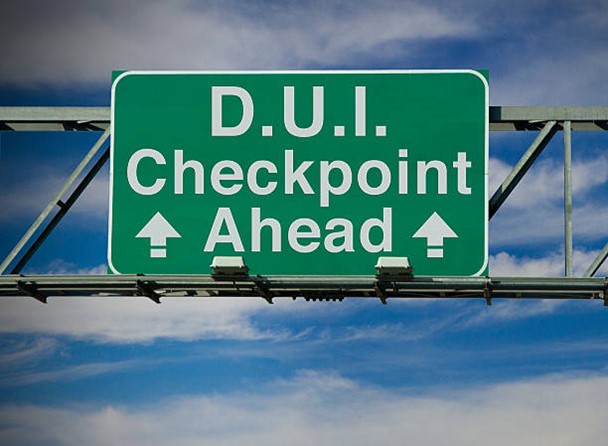
Drunk driving continues to be a leading cause of fatal traffic accidents in the United States. Despite public awareness campaigns and strict laws, thousands of lives are still lost every year due to impaired drivers. One of the most effective tools used by law enforcement to combat this issue is the sobriety checkpoint—a strategic, temporary roadblock where officers check drivers for signs of intoxication.
How Sobriety Checkpoints Work
Sobriety checkpoints are usually set up during weekends, holidays, and late-night hours—times when drunk driving incidents tend to spike. At these checkpoints, police officers:
- Briefly stop drivers in a predetermined pattern (e.g., every fourth vehicle)
- Look for signs of impairment such as slurred speech, glassy eyes, or the smell of alcohol
- Administer field sobriety tests if impairment is suspected
- Perform breathalyzer tests when necessary
These checkpoints are legally upheld in many states, including Ohio, provided they follow constitutional guidelines such as advance public notice and minimal intrusion.
Do Sobriety Checkpoints Really Work?
Yes—sobriety checkpoints are proven to reduce alcohol-related crashes and fatalities. According to the CDC, checkpoints can reduce alcohol-related crashes by 20% on average. Their visibility alone serves as a deterrent, encouraging people to think twice before driving drunk.
Key benefits include:
- Immediate removal of impaired drivers from the road
- Increased public awareness about DUI enforcement
- Reinforcement of safe driving habits
They also help law enforcement identify other dangers, such as unlicensed drivers, outstanding warrants, or even drug possession.
Legal Implications for Drunk Drivers Caught at Checkpoints
Drivers arrested at a sobriety checkpoint can face serious consequences, including:
- DUI charges
- License suspension or revocation
- Fines and legal fees
- Jail time (especially for repeat offenders)
- Mandatory alcohol treatment programs
For victims of drunk driving crashes, these checkpoints serve a different but equally critical purpose—they prevent future tragedies and help make roads safer for everyone.
Legal Help for Drunk Driving Victims
If you’ve been injured by a drunk driver, whether they were caught at a checkpoint or not, you may be entitled to significant compensation. The aftermath of a DUI accident can be overwhelming, but you don’t have to navigate it alone.
Contact Buckeye Accident Attorneys to speak with an attorney who understands the full impact of impaired driving accidents and how to hold drunk drivers accountable.
When Doctors Miss the Warning Signs of Spinal Infections
Spinal infections are among the most dangerous and time-sensitive medical conditions a patient can face. When caught early, most can be treated successfully with antibiotics or minor surgical intervention. But
Legal Help for Victims of Delayed Epidural Abscess Diagnosis
An epidural abscess is a serious infection that forms in the space between the bones of the spine and the protective membranes surrounding the spinal cord. It is a medical
Your Rights After an Emergency Room Misdiagnosis
An emergency room misdiagnosis can turn a moment of hope into tragedy. Whether a heart attack is mistaken for indigestion or internal bleeding is missed entirely, ER misdiagnoses can lead
Common Emergency Room Errors and How to Prove Them
Emergency rooms are designed to handle life-threatening situations quickly and efficiently. But when overcrowding, fatigue, or lack of coordination lead to mistakes, the results can be devastating. From missed diagnoses
Was the Bus Properly Maintained? Mechanical Failure Claims
When Neglected Maintenance Leads to Tragedy Buses transport thousands of Ohio residents daily—students, commuters, and travelers alike. Passengers trust that these large vehicles are inspected, maintained, and safe to operate.
Private vs. Public Bus Accidents: What’s the Difference in Legal Process?
Understanding the Two Types of Bus Accident Claims When a bus accident happens, one of the first and most important legal questions is who owns and operates the bus. Whether
Your Legal Rights After a Botched Colonoscopy
When Medical Errors Lead to Serious Complications A colonoscopy is meant to diagnose and prevent disease, not cause new harm. But when performed incorrectly, this routine medical test can leave
Perforation After Colonoscopy: A Sign of Negligence?
When a Routine Procedure Turns Dangerous A colonoscopy is one of the most common diagnostic tools in modern medicine — a routine procedure performed thousands of times each day across
Ohio Highways and the Rise of Commercial Truck Crashes
Why Truck Accidents Are Becoming More Common — and More Dangerous Ohio’s highways — from I-71 and I-77 to I-80 and I-90 — serve as major arteries for commercial trucking
How Federal Regulations Impact Your Truck Accident Lawsuit
Understanding the Rules That Govern the Trucking Industry When a semi-truck causes a serious crash, most victims don’t realize that the trucking company’s liability extends far beyond the driver’s actions.
